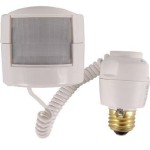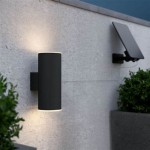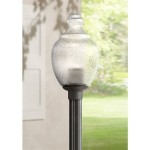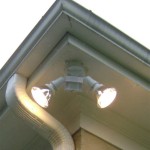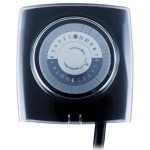How To Repair Plastic Wicker Outdoor Furniture
Plastic wicker, also known as resin wicker or synthetic wicker, offers the aesthetic appeal of natural wicker with enhanced durability and weather resistance. However, with prolonged exposure to the elements, even the most robust plastic wicker furniture can experience wear and tear. This article provides a comprehensive guide to repairing common issues, enabling furniture owners to restore their pieces to their former glory.
Assessing the Damage
Before initiating any repairs, a thorough assessment of the damage is crucial. This involves identifying the type and extent of the damage, which informs the appropriate repair approach. Common types of damage include:
- Cracked or Split Wicker:
- Frayed or Broken Strands:
- Loose or Detached Wicker:
- Sagging or Stretched Wicker:
- Rusting Frame (if applicable):
Gathering the Necessary Tools and Materials
Having the right tools and materials at hand streamlines the repair process. The following items are commonly required:
- Replacement wicker strands (matching color and style):
- Scissors or utility knife:
- Pliers:
- Flathead screwdriver:
- Glue (specifically designed for plastic or resin):
- Zip ties (optional):
- Heat gun (for certain repairs):
- Sandpaper (for metal frame repairs):
- Rust-proof paint (for metal frame repairs):
Repairing Cracked or Split Wicker
Minor cracks or splits in the wicker can often be repaired using specialized glue. Ensure the area is clean and dry before applying the glue directly to the damaged section. Hold the split edges together firmly until the glue sets. For larger cracks or splits, replacing the affected section of wicker may be necessary.
Replacing Damaged Wicker Strands
Replacing damaged wicker strands involves removing the broken piece and weaving in a new strand. Start by carefully cutting away the damaged strand near the frame. Weave the new strand through the existing wicker, following the original pattern. Secure the ends of the new strand by tucking them under the frame or using glue.
Reattaching Loose or Detached Wicker
Loose or detached wicker can be easily reattached using glue or zip ties. Apply glue to the underside of the loose wicker and firmly press it back onto the frame. Alternatively, small zip ties can be used to secure the wicker to the frame, trimming away any excess. This method is particularly useful for securing wicker around corners or difficult-to-reach areas.
Addressing Sagging or Stretched Wicker
Sagging or stretched wicker can often be tightened using a heat gun. Carefully apply heat to the affected area, causing the plastic to contract slightly. Monitor the process closely to avoid overheating and damaging the wicker. This technique requires caution and is best suited for experienced individuals.
Repairing a Rusting Frame
If the furniture has a metal frame, rust can weaken its structural integrity. To repair a rusting frame, first remove any loose rust using sandpaper. Apply a rust-inhibiting primer and then repaint the frame with a rust-proof paint. This will protect the frame from further corrosion and extend the lifespan of the furniture.
Preventing Future Damage
Regular maintenance can significantly extend the lifespan of plastic wicker furniture and minimize the need for repairs. Consider the following preventive measures:
- Regular Cleaning: Clean the furniture regularly with mild soap and water to remove dirt and debris.
- UV Protection: Apply a UV protectant spray specifically designed for plastic furniture to prevent fading and cracking from sun exposure.
- Protective Covers: Use furniture covers during periods of inclement weather or extended non-use to shield the furniture from the elements.
- Proper Storage: Store furniture in a dry, sheltered location during the off-season to prevent damage from moisture and extreme temperatures.
Finding Replacement Wicker
Locating replacement wicker that precisely matches the original can be challenging. Contact the furniture manufacturer or retailer for assistance in sourcing matching wicker. Alternatively, consider replacing a larger section of wicker or even an entire panel for a more uniform appearance if a precise match cannot be found.
Working with Different Wicker Types
Different types of plastic wicker exist, and the repair techniques may vary slightly. HDPE (high-density polyethylene) wicker is generally more durable and easier to repair than PVC (polyvinyl chloride) wicker. When undertaking repairs, consider the specific type of wicker and adjust the techniques accordingly. Consulting online resources or contacting the manufacturer can provide valuable information for specific wicker types.

Fixing Outdoor Rattan Furniture A Pretty Life In The Suburbs

Resin Wicker Patio Furniture Unraveling Hometalk

How To Fix The L Off Broken Weaving Of Chair

Resin Wicker Patio Furniture Unraveling Hometalk

How To Repair Resin Wicker Chairs Using Glue Gun Atc Furniture 2024

Wicker Furniture Repair Guide Jessica Welling Interiors

Atc Furniture How To Fix Poly Rattan Wicker 2024

Repair Plastic Wicker On Furniture 6 Simple Steps You Must Know Industry China Pe Rattan Outdoor Material Manufacturer

Fixing Outdoor Rattan Furniture A Pretty Life In The Suburbs

Fix Rattan Garden Furniture Resin Wicker Repair Outdoor
Related Posts
